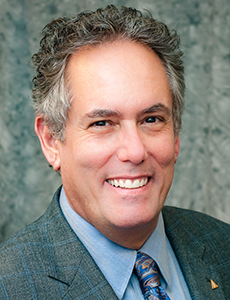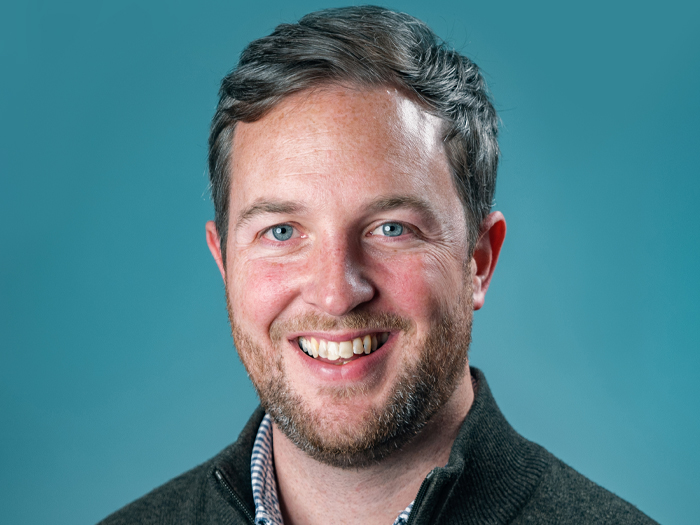Sponsored Content by Butler University
Why Diversity and Inclusion in Insurance and Risk Management Must Start Early in the Recruitment Process

For those working in insurance — an industry that touches every sector, from manufacturing and construction down to sports and recreation — it is imperative that they understand not just the industry they service, but also its people.
The United States is home to many cultures, ethnicities, generations, religions and races. Early reports from the 2020 census have already shown that the U.S. population is continuing to grow in its diversity. People from all walks of life are entering into the workforce every year.
This, said Victor Puleo, associate professor and Davey Chair of Risk Management and Insurance for Butler University, is a very good thing.
“Diversity has proven beneficial to an organization. The research I’ve conducted on diversity of experience on organizational performance in the insurance industry provides evidence that diversity positively impacts performance. Having different backgrounds and different people in leadership roles not only matches the diverse community we serve but also opens an organization to new views and different ideas.”
Diversity and inclusion have also had a positive impact on organizations’ financial performance, with one study finding companies with a more diverse management team had a 19% higher revenue due to innovation.
“The industry has done a great job of embracing social justice, diversity and inclusion so far,” Puleo said.
But there is still more to do, he said, especially for the Black and brown communities. “We have made significant strides. But now everyone is looking at, did we do enough? What else do we need to do? Our C-Suites still do not reflect what we see in our communities.”
In order to create change, Puleo said the time to act starts now.
Current Events Spark a Desire to Review and Continue to Improve Diversity Efforts

Victor Puleo, Associate Professor and Davey Chair of Risk Management and Insurance, Butler University
In late May, video surfaced of a Black man named George Floyd being arrested by three officers of the Minneapolis Police Department. After news broke that Floyd had died in police custody, the nation responded in a rally cry for change.
“It was the death of George Floyd that sparked a very deep desire to make change,” said Puleo. “The insurance industry responded that it, too, would embrace change. It has stated it wants to better its efforts in creating opportunity for people in the Black and brown communities.”
He reiterated that the insurance industry has already been focused on its diversity and inclusion efforts. This call for change has become a way to review what has already come before to create opportunity and what more is needed to move ahead.
“We have diversity and inclusion officers at many of the best insurance organizations out there,” Puleo said. “We know diversity counts. We wouldn’t have this role otherwise.”
The question then becomes, how can insurance take advantage of this moment in history and really give power to its D&I officers?
At Butler University, students involved in the risk management fraternity Gamma Iota Sigma get to see firsthand how the diversity and inclusion officer role works.
“One thing students in the Beta Lambda Chapter of Gamma Iota Sigma [an International Collegiate Fraternity for Insurance, Risk Management, and Actuarial Science students] at Butler University get to see is our diversity and inclusion officer performing his duties to create equal opportunity for a diverse student body,” Puleo said.
This officer engages with the local community and works with the National African American Insurance Association (NAAIA), on a regular basis.
Cameron Alford, a graduate of Butler, was one such student who saw the benefits of this role and worked to establish a student-led council of Gamma Iota Sigma called GammaSAID, which stands for Solutions for Authenticity, Inclusion, and Diversity.
GammaSAID has enabled 85 other universities with fraternity chapters to establish a diversity and inclusion officer position, further broadening the reach of the role.
“This is a great start for the industry,” said Puleo. “It shows we are ready to do something. Not just our industry, but I think our country as a whole, are much more prepared today than ever to start to break down barriers and make successes in our country available to all.
“The insurance industry has a role in that, and they’re willing to do it.”
Ways to Make Diversity and Inclusion Count from Day One
Because insurance has a role in promoting diversity and inclusion, it must start early to recruit a diverse workforce that reflects the communities it serves.
In order to do just that, Puleo said it starts as early as high school.
“The industry provides a number of career opportunities, but we do not have as many programs advertised or available to young students.”
There are approximately 85 different universities in the U.S. that have some type of risk management undergraduate degree program. This, Puleo said, is not enough exposure.
“These are great programs, but if every insurance organization recruited solely from those universities, we could not solve the talent crisis insurance is facing,” he said.
As Baby Boomers retire from 40+ years in the industry, they are leaving behind hundreds of thousands of seats for new talent. The next five to 10 years are predicted to have a huge turnover rate, and many in insurance are scrambling to fill open roles.
“To be able to fill that gap in the talent crisis, we need to be able to reach back into the high school systems and explain to students in high school the importance of what we do,” said Puleo. “We need to get them interested early in a path toward the industry.”
Puleo said that recruiting from a diverse pool of applicants will also give organizations the ability to fill in the gap created by retirees and extend diversity and inclusion efforts. Insurance can start to transform the talent pool coming into the industry to be reflective of the communities recruits are coming from.
“This industry is ripe with opportunity from the start. We have licensing, we have credentialing, we have professional education development through designations and certifications,” he said. “We are an industry of lifelong learners. This opens a door to any number of careers in insurance.”
Finding the Place Where Diversity and Inclusion Must Start
Butler University has a long history of diversity and inclusion.
Founded in 1855, Butler’s fundamental beliefs were rooted in the idea that education should be available to everyone regardless of race, regardless of gender, regardless of religion.
“Our school still has that as its founding mission,” said Puleo. “And, starting this fall, there is a new Social Justice and Diversity (SJD) requirement in the curriculum for all students matriculating at Butler University August 2020 and thereafter. The SJD courses have student learning outcomes (SLOs) that focus on critical scholarship on the historical, cultural, political and/or social experiences of marginalized communities and recognize and critique local, national or global conditions that enable, perpetuate and/or challenge social injustice and inequality. The SJD requirement will provide an opportunity for our students to be more aware of the presence and sources of injustice prior to entering the workforce and prepare them to actively counter them.”
Butler University’s risk management and insurance program includes an undergraduate degree program in risk and insurance, an undergraduate degree program in actuarial science and an online master’s in risk and insurance.
While considered a smaller university, with a total undergraduate enrollment around 4,500 students, Butler’s risk management program shines, even being named one of the top 10 programs in the country.
“We’re working hard to keep that top-10 status by focusing on not just our educational offerings, but also through embracing social justice and inclusion as part of our mission,” said Puleo.
To learn more about Butler’s master’s program, visit: https://www.butler.edu/msri.
![]()
This article was produced by the R&I Brand Studio, a unit of the advertising department of Risk & Insurance, in collaboration with Butler University. The editorial staff of Risk & Insurance had no role in its preparation.










